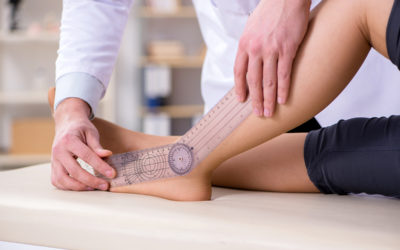Spine surgery was once a fear-inducing recommendation, connected with images of long hospital stays and extended painful recovery. Well, not any longer. Today, minimally invasive spine surgery allows patients with spinal injuries, herniated discs, spinal stenosis, scoliosis, and a host of other spine conditions to find relief much more easily.
At Tennessee Orthopaedic Alliance, we understand that you probably have questions about minimally invasive spinal surgery, its benefits, and how it can help you live a healthier, more active life. If you have any questions about surgery or your spine health, please don’t hesitate to call us. We’re happy to answer all your questions.
What is minimally invasive spine surgery?
Minimally invasive spine surgery is the gold standard in today’s orthopedic world. Unlike traditional open spine surgery, in which the patient’s back is opened with a long incision to perform surgery, minimally invasive spine surgery uses tiny instruments, a miniature camera, and small incisions to perform the same surgery.
Benefits of minimally invasive spine surgery
Our orthopedic surgeons at Tennessee Orthopaedic Alliance prefer minimally invasive spine surgery over traditional open surgery for several reasons:
- Faster recovery time – Smaller incisions mean less damage to surrounding tissues, leading to faster recovery times.
- Less scarring – Tiny incisions leave nearly invisible scars, leading to a better cosmetic result as well as less scarring internally. Internal scarring after surgery can lead to pain and stiffness that can hinder recovery.
- Shorter hospital stays – Patients are typically discharged two or three days after minimally invasive spine surgery.
- Less post-surgery pain – Smaller incisions lead to less pain that resolves more quickly during the surgery recovery period.
Types of minimally invasive spine surgery
There are many types of minimally invasive spine surgery. Here are a few of the most common types that you may have heard of before.
Discectomy – A discectomy is a minimally invasive spine surgery used to trim or remove part of a herniated disc in the spine. Discectomy surgeries are used to treat pinched nerves, sciatica, radiculopathy, and bone spurs.
Spinal decompression surgery – Spinal decompression surgery relieves pressure on the nerves in the spine that is caused by a narrowing of the vertebral canal. Spinal decompression surgery involves removing small slivers of bone or soft tissue that are pressing on the nerve and causing pain and weakness. There are many types of spinal decompression surgery, including laminectomy, laminotomy, microdiscectomy, and others. Spinal decompression surgery is used to treat spinal stenosis, a painful condition with symptoms such as numbness and weakness.
Spinal Fusion – Spinal fusion surgery is used to relieve pain caused by spondylolisthesis, scoliosis, disc herniation, or degenerative disc disease. In this minimally invasive spine surgery, screws and rods are placed into the vertebrae, then the disc is removed and replaced with a portion of bone. The bone graft then grows into the natural bone of the vertebrae, creating a single unit of two or more vertebrae. The goal of spinal fusion is to stabilize the damaged area of the spine.
Laminectomy – A laminectomy is used to remove part of the rear section of the vertebrae, called the lamina, to relieve pressure on the spinal cord or a compressed spinal nerve. Laminectomies are used to treat spinal stenosis, degenerative disc disease, and herniated discs.
Recovery time after minimally invasive spinal surgery
One of the minimally invasive spine surgery bonuses is its shorter recovery time versus traditional open spine surgery. Though every patient is different, in general, most patients who undergo minimally invasive spine surgery will be able to return to normal activities within about six weeks. Before the six-week mark, patients will need to restrict their activity and stick to their physician’s rehab, exercise, and medication recommendations.
Minimally invasive spinal stenosis surgery
Spinal stenosis is a painful condition caused by the narrowing of the space between the spinal nerves and the vertebrae. Without adequate space to move around during movements of the body, the nerve becomes trapped between the bone and soft tissues around the spine. This compression interferes with the nerve’s messaging to other parts of the body, resulting in pain, numbness, weakness, and tingling in the arms and legs. Spinal stenosis can also cause bladder and bowel dysfunction as well as balance and coordination issues.
Treatment for spinal stenosis includes minimally invasive spine surgery to create more space for the affected nerves. This is done by removing small sections of bone and soft tissue to create a larger passageway for the nerve, which will allow it to heal and properly send messages to the rest of the body and the brain.
Minimally invasive spinal stenosis surgery recovery time is typically brief, about six weeks for most patients.
Minimally invasive spine surgery for a herniated disc
Suffering from a painful herniated disc, and non-surgical treatments are not providing the right level of relief? Minimally invasive spine surgery may be the correct treatment option.
Lumbar decompression surgery is a common surgical treatment for a herniated disc. Discectomy is a type of lumbar decompression surgery that is recommended for a herniated disc. Discectomy removes the part of the herniated disc that has slipped out of place and is pressing on spinal nerves, causing pain, numbness, and weakness.
Minimally invasive spine surgery for scoliosis
The spine is meant to curve front to back in an S shape. When the spine curves to the side, this is referred to as scoliosis. Mild scoliosis may require no treatment at all, and many children diagnosed with scoliosis grow out of the condition. Severe cases, however, can cause a debilitating tilt of the body, affecting movement, contributing to lung and organ tissues, and causing pain.
For patients with severe scoliosis, minimally invasive spine surgery can help to straighten the spine. The most common type of minimally invasive spine surgery for scoliosis is a spinal fusion, in which certain vertebrae in the spine are fuzed together using rods, pins, and bone grafts.
Want to know more about how minimally invasive spine surgery can help you?
Schedule a consult with one of our orthopedic surgeons today. We help spine patients in East Tennessee regain healthy movement so they can get back to the lives they love.




